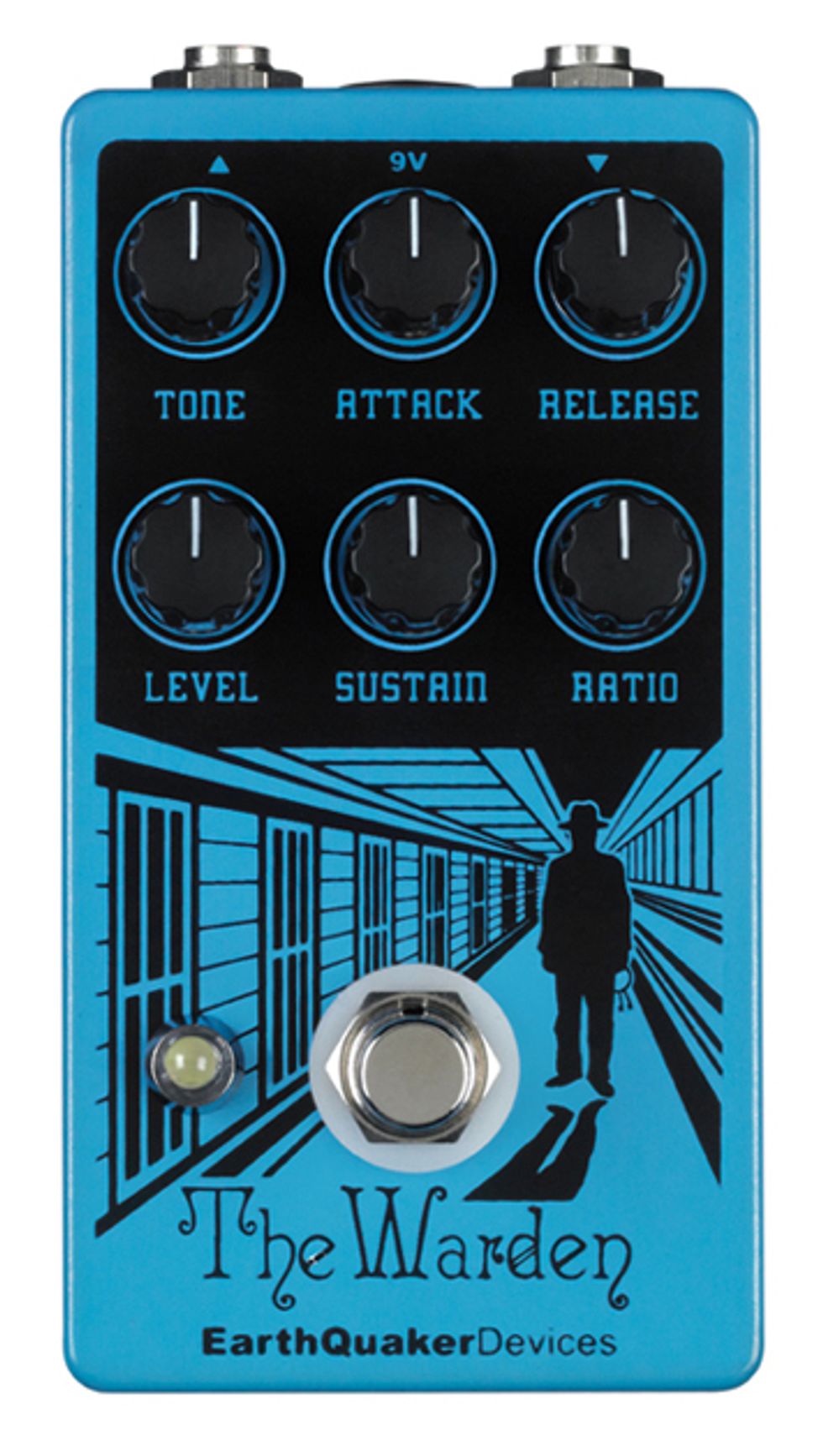Whether they realize it or not, guitarists play through compressors all the time. Amps squeeze your signal, especially when you turn up the gain. When you perform through a mic’d amp, the sound system may further squash your sound. Recording guitarists often track through compressors. Additional compression is applied while mixing, and more still during mastering.
Still, some guitarists like adding another compression stage between guitar and amp. They find that light settings fatten their sound going into the amp, while heavier ones provide supernatural sustain. At one point in the ’70s, simple compressors such as the Armstrong Orange Squeezer and MXR Dyna Comp were practically required gear for session cats.
Control Freak
Those Carter-era compressors are simple devices—the Dyna Comp has only two controls, while the Squeezer has none. Nowadays players who love compression and the ability to fine-tune it gravitate to more complex pedals whose options rival those of outboard studio units.
The six-knob EarthQuaker Warden is a fine example of a feature-rich squeeze box, with dedicated attack, release, sustain, ratio, and output controls. There’s also a tone control—a subtle treble EQ that excels at restoring snap and sparkle lost to aggressive compression.
The Warden is an optical compressor, which means it uses an internal LED and light-dependent resistor to regulate levels, as opposed to the voltage-controlled amplifier (VCA) method used by the Dyna Comp, the Squeezer, and most modern compressors.
Optical Allusions
The Teletronix LA-2A, an outboard compressor from the ’60s, popularized optical compression. Newer non-optical compressors offer faster, more transparent compression, but opto compressors remains popular because of their vibey coloration and relatively slow response, both of which can to do nice things to guitar signals.
The Warden isn’t the only opto-comp stompbox on the market, but it’s one of the best. Workmanship is superb: the lucidly designed circuit board rests securely in the 125B-sized enclosure. Soldering is flawless. Despite the pedal’s small footprint, it’s easy to wrangle those small knobs.
Ratings
Pros:
Highly customizable tones. Vibey, fat-sounding compression. Excellent workmanship.
Cons:
No battery-power option. No parallel compression (wet/dry blend).
Tones:
Ease of Use:
Build/Design:
Value:
Street:
$195
EarthQuaker Devices, The Warden
earthquakerdevices.com
And man, it sounds good. The Warden runs on a standard 9-volt power supply, but its internal charge pump boosts operation to 18 volts. The higher voltage and great-sounding OPA2134 op amp give the Warden a clear tone with ample headroom. Setting all controls at noon yields subtle fattening. Faster attack times, lower thresholds, and higher compression ratios flatten dynamics like a steamrollered Wile E. Coyote, yet there’s little coloration. The perfectly voiced tone control restores lost sparkle and adds bite to neutered note attacks. (Like all compressors, the Warden can make noise more noticeable in soft passages, but it’s quiet for a stompbox unit.)
One thing the Warden doesn’t have is a blend knob to balance compressed and uncompressed signals, a feature popularized by boutique compressors such as the Barber Tone Press. (A common technique is to compress heavily, but mix in some unprocessed sound for stronger note attack and a subtler effect.) But I had little trouble dialing in subtle compression via slow attack times and low ratio settings.
Squeeze Me
I started with a clean-toned ’63 Fender Stratocaster straight into a Divided by 13 CJ11, a Fender-inspired tweed/blackface hybrid. Next I replayed the same part through the Warden with all knobs at noon. The pedal softened attack, increased sustain, and evened out arpeggios. Switching to an overdriven ’81 Gibson Les Paul with PAFs, I played chunky chords with no compression. I reintroduced the Warden, but with a slower attack time, a lower compression ratio, and extra highs via the pedal’s tone knob. The compressed version had smoother sustain and less discrepancy between chords and single notes, but thanks to the treble boost, it probably had more impact than the uncompressed sound.
Verdict
Evaluating the Warden is easy—it’s a vibey, versatile, and extremely well made compressor at a competitive price. The trickier questions: Will adding compression between guitar and amp suit your style? And if so, would you prefer to work with the Warden’s flexible but relatively complex controls, or go with a minimalist model in the Dyna Comp/Orange Squeezer vein? If you’re confident about your compression needs and seek studio-style control from a stompbox, you’ll thrive under the Warden’s supervision.








![Rig Rundown: Russian Circles’ Mike Sullivan [2025]](https://www.premierguitar.com/media-library/youtube.jpg?id=62303631&width=1245&height=700&quality=70&coordinates=0%2C0%2C0%2C0)

















